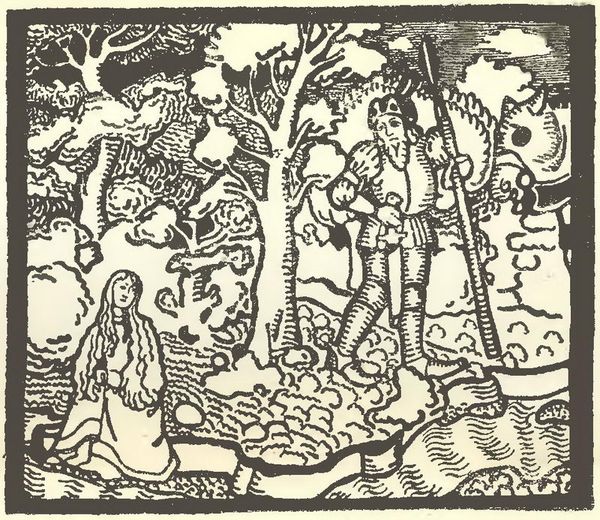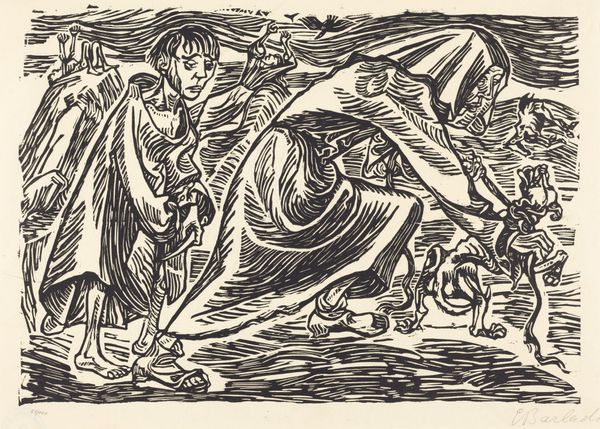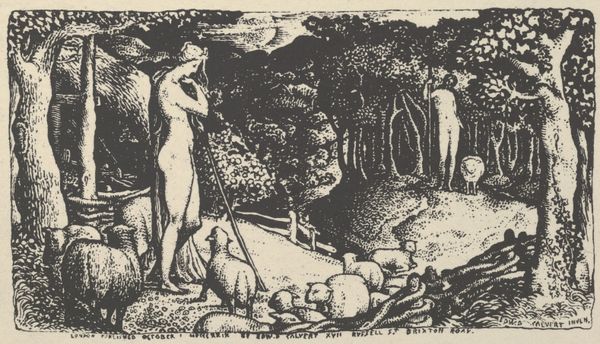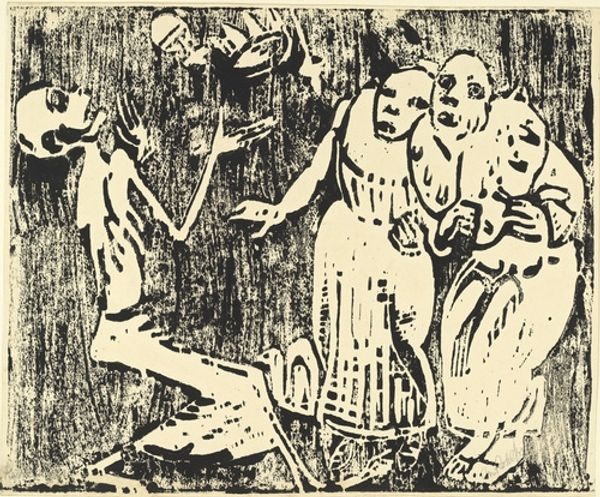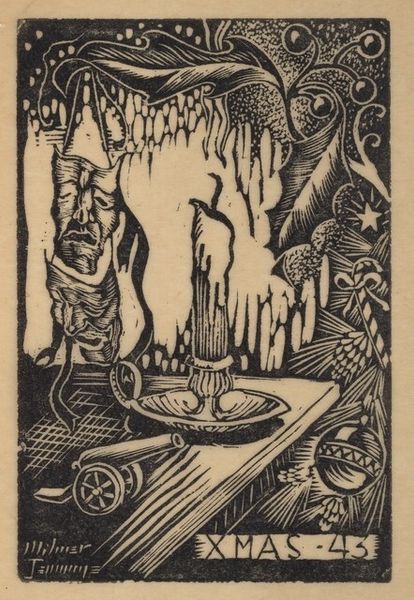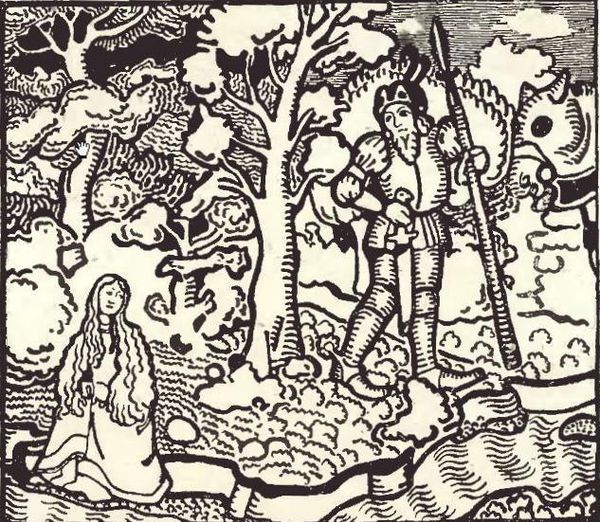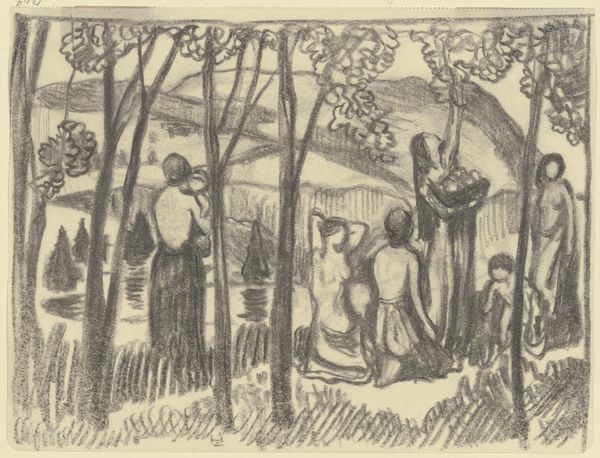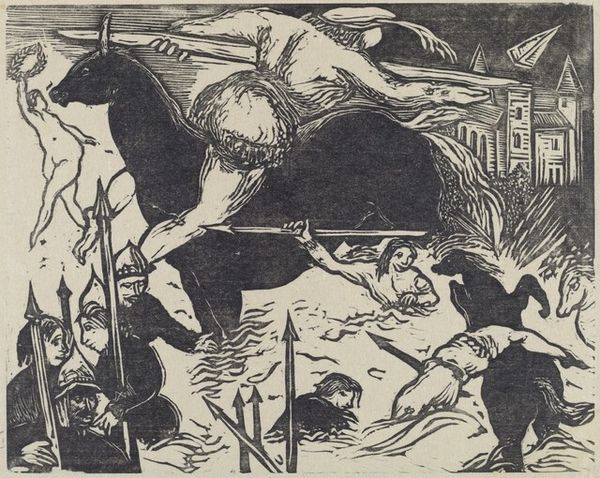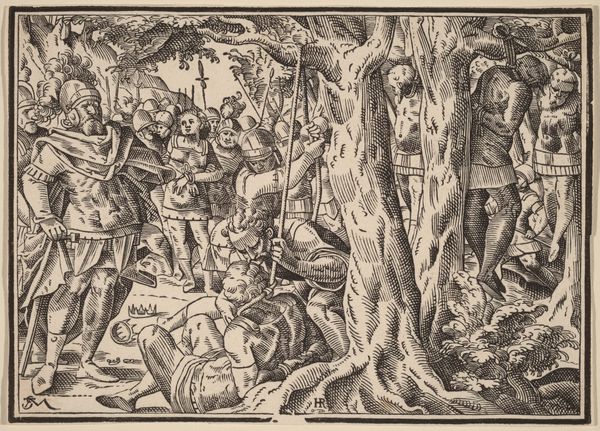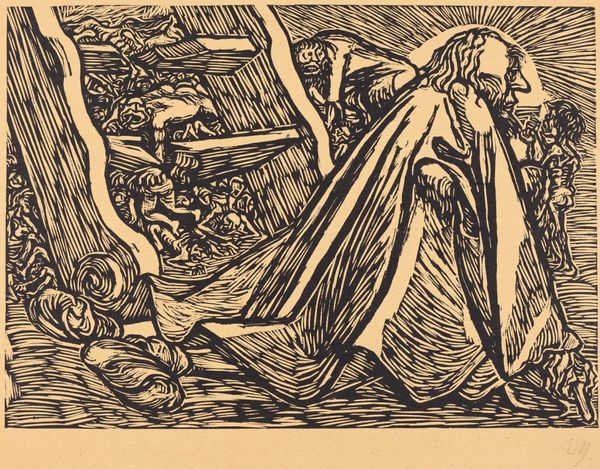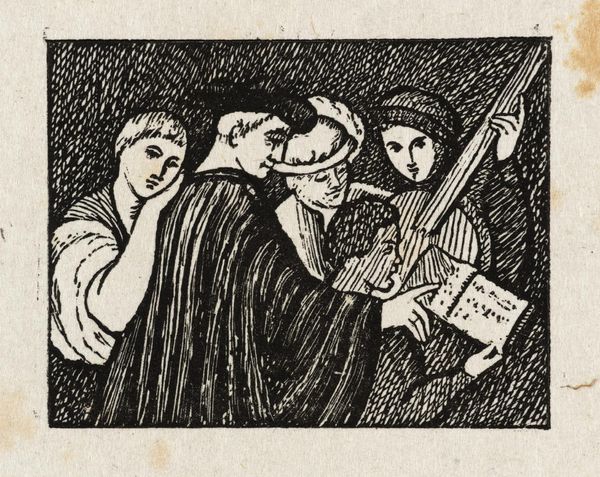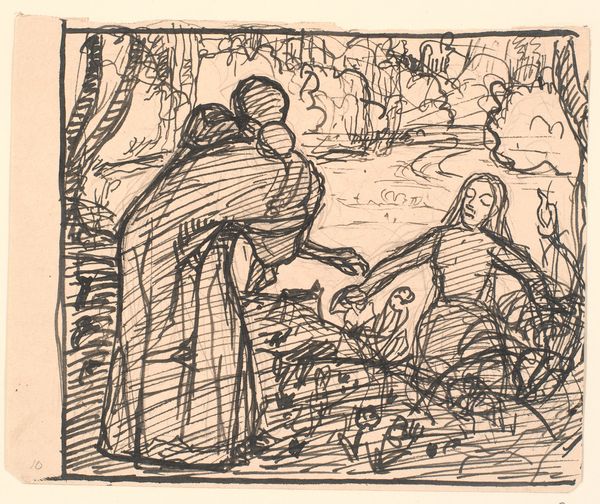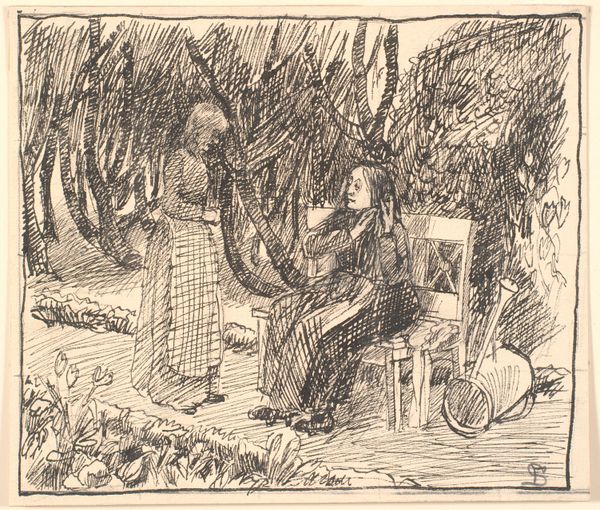
drawing, print, ink, woodcut
#
drawing
#
narrative-art
# print
#
landscape
#
figuration
#
ink line art
#
ink
#
woodcut
#
symbolism
#
northern-renaissance
Copyright: Public domain
Curator: The stark beauty of Nicholas Roerich’s 1906 woodcut and ink drawing, titled "Blind", immediately strikes me. What are your initial impressions of it? Editor: The scene is incredibly dense. It evokes a primal mood, a sort of Northern Renaissance vision, rendered in black and white with remarkable detail, particularly considering it’s a print. The figures seem almost huddled together, as if for protection. Curator: It’s interesting that you picked up on the feeling of vulnerability. Roerich was deeply engaged in the social and political landscape of his time. Given the artwork's title, the gathered figures could be viewed as a critique of societal blindness to suffering, or perhaps even to injustice. Editor: The composition also reminds me of certain medieval tapestries and morality plays where symbolism was densely layered. I am fascinated by how the figures seem deliberately cloaked. Perhaps, each of those dark shapes represents a unique aspect of blindness— ignorance, despair, or even chosen oblivion. Curator: Yes, their garments are concealing but they’re also socially-coded, particularly in their variance. This can make us reflect upon the diverse manifestations of "blindness" - socially constructed or systematically imposed within different identities and lived experiences. Consider how that large shape in the middle isolates individuals within the composition itself, echoing metaphorical obstructions. Editor: And consider how that central form—almost like an enormous, closed eye—dominates the space. The artist strategically places these looming forms to force the viewer to reflect not only on literal sightlessness, but the blindness to truth. The shapes could indicate that there are psychological depths and veiled experiences in the work. Curator: Absolutely. Through its medium and stylistic reference, it harkens back to historical forms of oppression, using a retrospective lens to critique contemporary circumstances and urging us to examine power structures critically. The use of black and white in this drawing amplifies its message of obscured vision. Editor: The impact lies in how the formal choices intensify these psychological and societal symbols, and the artistic genius makes "Blind" more than just an artwork, but a haunting and urgent reminder. Curator: A fitting and unnerving summation. It's certainly a powerful artwork that calls us to look beyond the obvious and consider our own sight, literally and metaphorically.
Comments
No comments
Be the first to comment and join the conversation on the ultimate creative platform.
